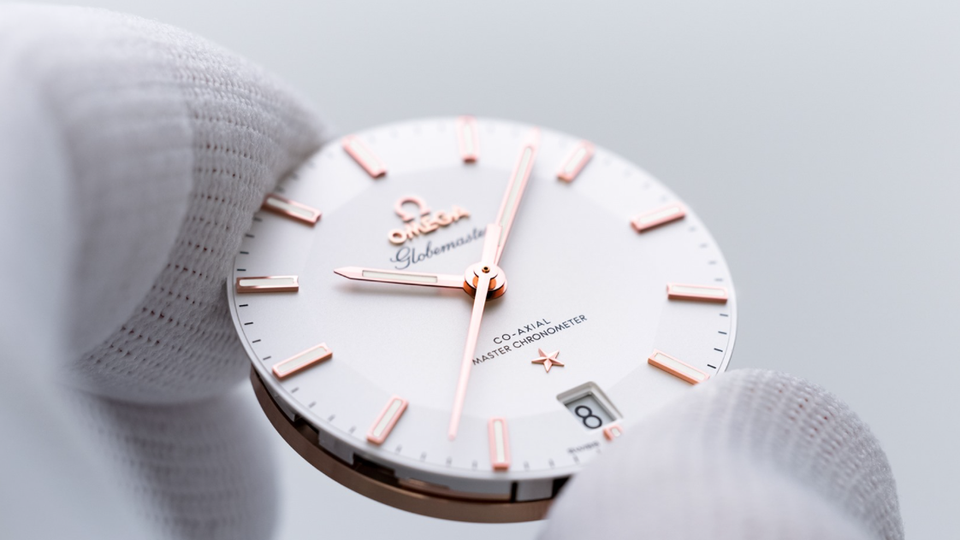
Between traditional brick-and-mortar stores and new digital ventures, luxury watch sales are all over the place.
Earlier this month, when the popular watch website Hodinkee announced that it had been named an authorized retailer for Omega, one of the world’s largest watch brands, both parties celebrated the news with a 10-day pop-up in Manhattan’s Soho neighborhood.
The mixed messaging about how to sell, via brick-and-mortar or e-commerce, was nothing new for Omega, whose retail points of sale span the physical and digital worlds. Not only does the brand sell on its own website and at its own mono-brand boutiques, it also retails through a small network of wholesale partners—like Feldmar, a multi-brand retailer in Los Angeles, and the U.K.-based chain Watches of Switzerland, both of which have proven themselves progressive enough to remain in Omega’s good graces.
Striking Balance
“E-commerce is one of the key factors of our evolution in the U.S.A.,” Omega president and CEO Raynald Aeschlimann told Luxury Society days before the Hodinkee announcement. “But the intent is to be current in any of these channels. We were first in the watch industry in our price segment to open straight and direct e-commerce in the States without closing any of our 20 stores or any of our partners with multi-brand stores. To the contrary, we even opened a franchise store last year with Watches of Switzerland.
Omega’s multipronged approach to distribution reflects a broader retail reality for the high-end watch industry: Between the growing emphasis on direct-to-consumer channels—both on- and offline—and burgeoning partnerships with digital platforms such as Hodinkee, Mr Porter and Farfetch, the traditional retail model is being squeezed.
Omega's Fifth Avenue boutique, New York. (Image courtsey: Omega Watches).
And yet, for all the hoopla over online sales of luxury watches, e-commerce still represents a tiny portion of overall sales—below 5 percent, according to Thierry Huron, founder of The Mercury Project, a watch and jewelry consultancy based in Le Landeron, Switzerland.
“This under-penetration of e-commerce is a function of watch brands having so far taken very timid steps to shift away from wholesale (third party retailers) towards their own online channel,” he wrote in an email. “Many brands don’t propose the option to buy online.”
Huron cited the two elephants in the (chat) room: Rolex and Patek Philippe, neither of which are sold online, at least not through primary channels. While the brands remain mum on their rationale, it’s clear that whatever they’re doing is working. Along with Audemars Piguet, another e-commerce holdout, “these three brands account for 32 percent of Swiss watch brand sales,” says Huron, citing a 2018 Morgan Stanley study that calculated retail market share in value.
Mixed Messaging
The trio’s reluctance to embrace digital commerce is in stark contrast to the growing buzz among Swiss watch industry talking heads that online sales are the way of the future, all of which makes for a pretty mixed-up marketplace.
“What’s the right balance between direct-to-consumer, wholesale distribution and selling in their own boutiques? No brand has really figured this whole thing out,” says luxury marketing strategist Pam Danziger, founder of Unity Marketing. “The digitally native brands that made such a splash online are now opening their own stores. There’s a huge hurdle in how to reach the consumer and nobody’s figured out the magic formula.”
While the prospect of capturing a full-retail margin, not to mention customer data, is enticing, a direct-to-consumer strategy is inherently risky for all but the watch world’s household names.

Image courtesy: Patek Philippe.
“The retailer plays a key role because people trust their retailers,” says Fabrice Paget, a former Cartier executive and founder of the London-based Luxury Brand Agency. “If you’re new, retailers and press are key.”
That’s especially true for smaller, independently owned brands, many of whom have focused their marketing strategies on well-established multi-brand retailers who offer a physical space to showcase the watches, expert feedback and a built-in clientele.
“We did have an e-commerce site, but it was never well thought out in terms of strategy, and we closed it down three months ago,” says Boon Chong Soon, global sales and marketing director of Montres Corum. “We are an 80 percent push brand, not a pull brand, and do not wish to be in direct competition with our retailers.”
Grégory Dourde, CEO of HYT Watches, echoes that sentiment. “We rely on our partners to be effective touch points and help close sales through digital or brick-and-mortar stores,” he says. “We are not competing against them in the final process of sale as we see them as key partners in our value chain. Being mobile and active and intensively communicating, we help them acquire customers and provide an experience. We see this support as a connecting role, theirs being to sell.”
Dourde makes clear that he has no problem with retailers selling HYT’s watches through their own sites. Most, however, still transact the old-fashioned way: Click on a timepiece featured on a retailer’s website and in place of the “Add to Cart” button, you’ll see “Contact Us,” prompting buyers to either physically go into a store or purchase the piece over the phone.
Interested in accelerating your brand's e-commerce revenues?
The Power of Partnerships
There are two major consequences to retaining this paradigm, according to Huron: “The lack of online retailing has made this channel the exclusive domain of grey market players (Chrono24, Chronex), which has serious implications for brand equity,” he says. “And a brand that wants to become successful on the essential Chinese market needs to be associated with a local powerful online platform, such as JD.Com.”
The one area where the rules appear to be changing is in the preowned space. In early November, Breitling joined forces with the preowned watch site Crown & Caliber on a program that allows customers to trade in any luxury watch for a credit towards a new Breitling watch on breitling.com.

Image courtsey: Breitling.
On the heels of that news came the announcement that WatchBox, an online trading platform for preowned watches, had partnered with Ahmed Seddiqi & Sons, the Dubai-based luxury watch retailer, on a joint venture to launch WatchBox Middle East, including a flagship WatchBox boutique opening in the Dubai International Financial Centre (DIFC) this month.
But even here, the message is mixed. For Breitling, the model centers on online trade-ins backed by a trusted e-tailer. For the digital native WatchBox, the deal with Seddiqi gives its virtual venture a physical footprint for the very first time.
Looking ahead to 2020 and beyond, conventional wisdom in the luxury trade seems to suggest that the most viable commercial strategy will include some combination of IRL experiences and digital storytelling.
“A lot of brands agonize and spend a lot of resources building their e-commerce sections, but that’s not the important space,” Paget says. “This is your chance to tell your story in the best possible way using films, images, texts and animations, and then, if you want a transaction at the end, why not?”
Cover image credit: Omega.










